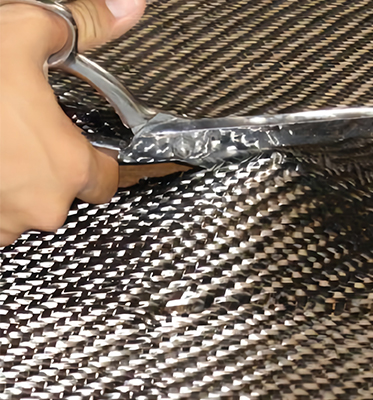Study on surface protection treatment of carbon fiber and its composite materials
Carbon fiber and its composite materials with its excellent performance, such as high strength, low density, corrosion resistance, etc., in aerospace, automobile manufacturing, sports equipment and many other fields have been widely used, commonly used in aircraft wings, body frames, golf clubs and other parts. However, its surface properties are easily affected in the actual use environment, so surface protection treatment is essential. For carbon fiber and its composite parts, it is necessary to focus on surface treatment in some parts that are easy to wear, easy to corrosion and withstand large stresses. For example, the leading edge and trailing edge of the aero engine blade are prone to wear and erosion under high-speed airflow. The wheel hub of the car is in contact with the ground during the driving process, facing the risk of sand impact and corrosion; The frame of the tennis racket in sports equipment bears greater impact and friction when hitting the ball. The surface state of these parts directly affects the performance and service life of the parts.
The surface treatment of carbon fiber and its composite materials is the basis of subsequent coating protection. Common surface treatment methods include physical treatment and chemical treatment. Physical treatment, such as mechanical grinding, can remove surface impurities and uneven parts, increase surface roughness, and improve coating adhesion. Chemical treatment includes oxidation treatment, plasma treatment and so on. Oxidation treatment can introduce oxygen-containing functional groups on the surface to enhance the surface activity. Plasma treatment can be bombarded with high-energy particles, cleaning the surface and changing the surface chemical structure, making it easier to bind to the coating.
In terms of coating selection, the composition of the primer plays a key role. Epoxy primers are widely used because of their good adhesion, corrosion resistance, and wettability to carbon fibers. It binds tightly to the surface of the carbon fiber, providing a stable basis for subsequent coatings. The thickness of the primer is generally between 10-20 microns, too thin may not provide adequate protection and adhesion, and too thick is prone to internal stress leading to coating cracking.
The characteristics of the finish paint vary according to different application scenarios. In outdoor applications, such as carbon fiber reinforced components for building curtain walls, the finish needs to have excellent weather resistance, able to resist UV, rain, temperature changes and other factors. Fluorocarbon topcoat is a common choice, it has a very low surface energy, can effectively prevent dirt adhesion, while having excellent weather resistance, long-term exposure to outdoor environment is not easy to fade, powder and flake. In some applications that require high wear resistance, such as mechanical parts, polyurethane topcoats perform well. It has high hardness and wear resistance, can maintain the integrity of the coating in the friction environment, and protect the carbon fiber composite matrix. The thickness of the top coat is usually 20-50 microns, depending on the actual needs and the environment in which it is used.
The post-treatment after the coating is finished can not be ignored. Generally, curing treatment is carried out, and the resin in the coating is cross-linked and cured by heating or lighting, etc., to improve the hardness, wear resistance and chemical resistance of the coating. For example, for a coating using a heat-curing system, maintaining it at a certain temperature for a period of time can make the coating performance reach the best state. In addition, surface polishing may also be performed to reduce surface roughness and improve the appearance quality and fluid dynamics of components, such as polishing the surface coating of the carbon fiber bicycle frame after curing, so that it reduces air resistance during riding.
In practical applications, polyurea coating is also a material commonly used for surface protection of carbon fibers and their composites. It has the characteristics of rapid curing, high elasticity, good corrosion resistance and wear resistance, and is suitable for some occasions that require high construction efficiency and protective performance, such as carbon fiber components in Marine engineering. It is convenient for spraying construction, and can form a uniform and continuous coating on the surface of complex shaped parts, effectively preventing seawater erosion and Marine biological attachment.
The surface protection treatment of carbon fiber and its composite materials is a systematic project, including suitable surface treatment methods, carefully selected primers and topcoats, and perfect post-treatment processes. Through these measures, the performance and service life of carbon fiber and its composite components can be significantly improved, and its application prospects in more fields can be expanded.
 CHINESE
CHINESE New Bright Carbon Fiber Products Co., Ltd
New Bright Carbon Fiber Products Co., Ltd


